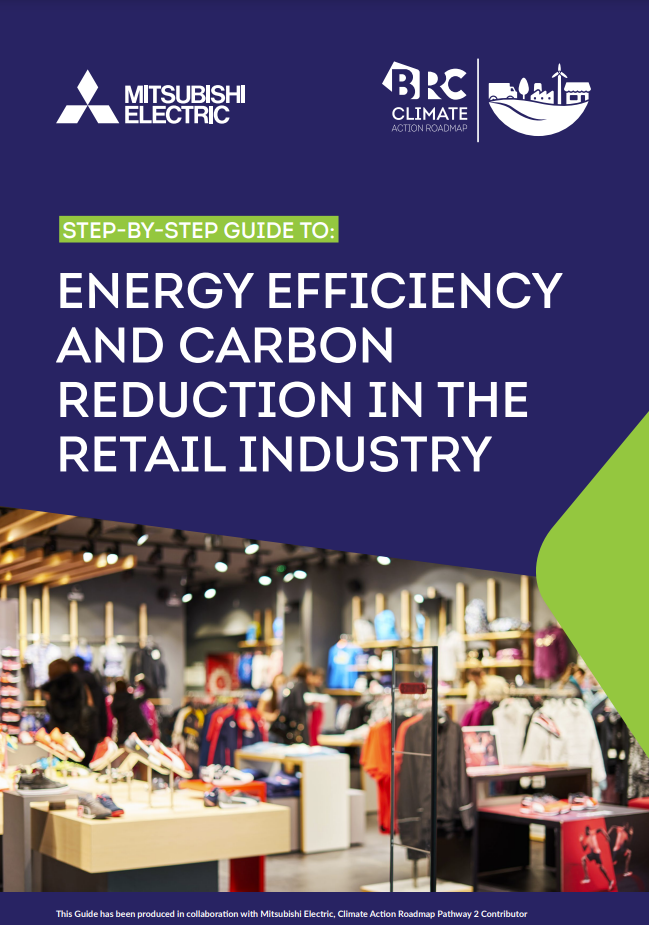Mitsubishi Electric’s James Harman considers the challenges and opportunities of updating air conditioning systems for retail clients.
UK retailers are the second-largest market for air conditioning systems in the UK, after office buildings. Providing comfortable environments for shoppers and staff is paramount, so air conditioning systems must be robust, delivering reliable and problem-free cooling and heating.
At the same time, the retail environment offers several system design, operation and maintenance challenges. Retail outlets come in many shapes and sizes, so air conditioning system specification must focus on issues such as ceiling heights, footfall (including peaks) and loads from lighting. Even the types of products sold in-store can affect air conditioning systems. For example, clothing sheds fabric strands that can quickly build up on air conditioning filters, so allowance must be made for quick and easy cleaning.
Heating loads are another significant issue. Good lighting is critical for retailers, as it sets off products to the best advantage and helps to attract customers. However, lighting contributes to heating loads even with the switch to LED lighting, which is underway across the retail sector. And if we add the UK’s increasingly hot summers and heatwave occurrences, then cooling in-store is more crucial than ever.
The UK retail sector is also very aware of its environmental responsibilities. For example, the British Retail Consortium, which includes high street giants such as Marks & Spencer and supermarkets such as Tesco and Sainsbury’s, focuses on reducing the sector’s energy use and carbon footprint. The Consortium’s Climate Action Roadmap has set a target of reaching net zero by 2040. Therefore, the energy use of building services systems such as air conditioning within stores is a vital aspect of specification and operation for retailers.
Many retailers are working across their store portfolios to improve the efficiency of their properties as a key part of their carbon reduction strategies. In addition to minimising energy use to reduce operational costs, there are several other drivers behind these updates. For example, corporate ESG strategies focused on delivering measurable improvements across the whole business; customers who want to see big brands adopting climate-friendly approaches; and legislation pushing targets on building energy use. Other issues include changing requirements on refrigerants in air conditioning systems, with the phase-down of high-GWP (Global Warming Potential) refrigerants already well underway.
As significant energy users, air conditioning systems can be an excellent source of energy savings when older equipment is reaching the end of life. But replacing systems in operational stores is a process that must be managed to optimise speed and achieve energy-saving outcomes.
Mitsubishi Electric has worked with many retailers to update air conditioning systems. As a result, we have five simple recommendations at the start of every project that can be useful to keep in mind.
The first step is to make an inventory of your existing equipment. It is surprising how easy it is to lose track of what equipment is installed where, particularly across large, dispersed estates. But it’s important to know what you have, as this can impact the options that could be on the table when it comes to an upgrade. At the same time, review your maintenance regimes because this may be the quickest and most straightforward way of reducing energy costs and carbon emissions. Well maintained equipment will perform better and help reduce the amount of energy consumed.
Secondly, once you have decided that an upgrade is necessary, consider a smart approach to replacement that can reduce disruption. Mitsubishi Electric’s air conditioning systems can be installed in a modular fashion which can enable replacement in stages to fit around a refurbishment programme that doesn’t mean closing the entire store. Replace Technology systems also allow for renewal of the air conditioning units while retaining the existing pipework and electrical systems. The ability to use Replace Technology depends on what equipment is already in place, hence the importance of knowing what’s already in your building.
A third vital step is to apply controls for long-term energy savings. The most efficient equipment will quickly be inefficient without controls that are understood and used by store managers and their teams. The latest equipment can support good practice by automatically turning off air conditioning in unoccupied spaces. It’s easy for staff to forget to turn off the cooling in a meeting room as they leave, for example. But the Mitsubishi Electric modern 3D iSee sensors can scan a room to detect how many people are in it and switch off the system when a room is empty.
Controls should also help to collect data on energy use in a building, which is vital for long-term energy efficiency and carbon reduction programmes. Collecting data makes it possible to compare buildings – spot what works and apply that in other stores or pick out high-energy-using areas for further improvements.
Mitsubishi Electric’s MELCloud is a cloud-based solution for controlling air conditioning (and other) systems locally or remotely. This means that a central facilities management team can oversee the performance of systems across an entire retail estate (even one that’s global) and identify trends and patterns of energy use. This is also useful for spotting potential equipment issues before they become breakdowns.
The fourth recommendation is to work with a manufacturer who can help you roll out the end-of-life for equipment and develop a programme of work that allows for the new equipment to be introduced with minimal interruption. Mitsubishi Electric has also pioneered the use of embodied carbon data for products, so that the whole lifetime impact of an air conditioning system can be calculated throughout its working life.
Finally, once you’ve installed new equipment, don’t forget to plan for the ongoing service and maintenance regime. A robust approach to service and maintenance for air conditioning systems ensures the equipment operates at its most effective and efficient and extends its lifetime, making the most of your investment.
The BRC Roadmap has a target of reaching net zero by 2040. Therefore, the energy use of building services systems is a vital aspect of specification and operation for retailers.
It’s worth remembering that maintenance on this type of equipment is more complex than simply checking refrigerant levels. Everything from the calibration of temperature and pressure sensors to compressor operation and heat transfer from exchangers must be regularly checked. Operating conditions should also be logged to ensure correct optimum running efficiencies, and this is where data collection is so invaluable. Doing this will keep equipment operating within its target parameters for its entire life cycle.
Service and maintenance also have vital roles in ensuring that HVAC equipment stays within its optimum operation, helping to avoid wasteful energy consumption. In addition, regular planned visits can help to maintain energy efficiency levels over time.
Mitsubishi Electric’s Service and Maintenance teams can support in-house engineering and facilities teams from commissioning to helping plan for equipment replacements.
Replacement projects can be complex and challenging to manage. However, working with the right manufacturer can reduce the potential headaches and achieve a cost-effective finished project that delivers excellent outcomes for the stores involved.
For further information, please refer to https://les.mitsubishielectric.co.uk/end-users/application-by-sector/retail
To find out more about Mitsubishi Electric and the services they provide to the retail industry, click here.
This article was also published in The Retailer, our quarterly online magazine providing thought-leading insights from BRC experts and Associate Members.

